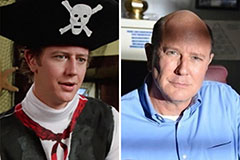The roads are choked. The arteries of our nation are clogged with a flood of vehicles. We're stuck in an endless cycle of stop-and-go traffic, wasting valuable time and worsening our environmental impact. Traffic jams have become an unwelcome reality, leaving commuters frustrated and stressed. This national plague demands our attention, urging us to find innovative solutions before we are truly trapped.
Tackling Chaos: The Urban Commute
The urban commute is a daily ritual for millions. Each morning, they venture into the heart of the city, facing a chaotic maze of vehicles. From packed subways to gridlocked roads, the journey is often an exercise in grit. But amidst the agitation, there are pockets of beauty. A chance conversation with a stranger can brighten your day. Or perhaps, it's simply the tranquil rhythm of the city that allures you.
The Dance of Vehicles
Smooth transportation streams is a coveted state on any road network. It's a symphony of speed, where vehicles glide with minimal interference. However, the ideal flow can be quickly shattered by obstacles. These elements of friction can range from repairs to collisions, each adding to congestion and frustration.
One of the most common causes of traffic slowdowns is simply too many vehicles trying to use the road at the same time. get more info This can lead to bumper-to-bumper conditions, where even small variations in rate of travel can have a significant impact on the flow of traffic.
- Moreover, weather conditions such as rain, snow, or fog can also reduce visibility and make it more difficult for drivers to operate their vehicles safely.
- Also, driver actions plays a crucial role in the smoothness of traffic flow. Aggressive driving, such as tailgating, can generate hazardous events.
Decoding the Highway Maze
Threading your way through a bustling metropolis's interstate/highway/expressway network can feel like embarking on an epic quest. With signs/markers/indicators pointing in various/multiple/diverse directions, and traffic/vehicles/cars weaving between lanes at varying/different/uneven speeds, it's easy to get disoriented/lost/confused. But fear not, intrepid traveler! By utilizing/employing/harnessing a few simple strategies/techniques/tips, you can transform/convert/alter that daunting labyrinth into a smooth and efficient/streamlined/organized journey.
- Plan your route carefully before setting off, taking into account rush hour traffic patterns.| Consult a map or GPS navigation system to identify the most direct path. | Research alternate routes in case of unexpected closures or congestion.
- Stay alert and focused on the road ahead.
- Maintain a safe following distance from the vehicle in front of you.
Transportation's Burden: A Monetary Maze
Traffic congestion grips our cities, imposing a tremendous economic burden on individuals and communities. The lost time in gridlock translates into diminished productivity, lost revenue for businesses, and higher fuel consumption. Furthermore, the environmental impact of traffic congestion is stark: increased air pollution, greenhouse gas emissions, and noise pollution harm our standard of life.
Finding solutions to this intricate problem requires a integrated approach that includes investments in public transportation, innovative traffic management systems, and policies that encourage alternative modes of transportation.
Intelligent Urban Environments, Optimized Street Systems
The evolution of cities is quickly underway, driven by a expanding need for livability. At the heart of this change lies the concept of the connected urban environment, where technology is seamlessly integrated into every aspect of urban life. From flow control to resource efficiency, smart cities are reimagining how we live, work, and interact with our surroundings. Streets, as the veins of a city, play a crucial role in this evolution.
- Adaptive street lamps can optimize brightness based on real-time conditions, cutting energy consumption and improving visibility.
- Intelligent sensors can track traffic flow, highlighting congestion points and providing real-time updates to drivers.
- Walkable infrastructure emphasizes the safety and comfort of pedestrians, with separated bicycle routes and pedestrian plazas.
With these innovations, smarter streets are not just about improving traffic flow and reducing congestion. They are about developing more sustainable cities, where technology facilitates a improved quality of life for all residents.
 Taran Noah Smith Then & Now!
Taran Noah Smith Then & Now! Judge Reinhold Then & Now!
Judge Reinhold Then & Now! Freddie Prinze Jr. Then & Now!
Freddie Prinze Jr. Then & Now! Lucy Lawless Then & Now!
Lucy Lawless Then & Now! Erika Eleniak Then & Now!
Erika Eleniak Then & Now!